SLV Medical Hall of Fame Inducts 2017 Class
SLV Health
Recipient Betty Eavenson with her son Eddy and daughter-in-law Susie
ALAMOSA, CO – Three nurses and four doctors were recognized on Friday, May 19, 2017 at the SLV Health Education and Conference Center, Alamosa, for their leadership and years of service in the second annual SLV Medical Hall of Fame ceremony. The class that was inducted in 2017 includes: Dr. Vetalis Vernon Anderson, Dr. George Davis, Dr. Roy Joshua Day, Betty Eavenson, R.N., Inez Stevens, R.N., Dr. Siegfried Ernst Wittenberg, and Ann Mary Dolcini Edstrom Watters, R.N.
Most of the inductees have passed away, but present to receive her award in person was Betty Eavenson, R.N., who Dr. Jay Ruddell said in an interview, “Betty was the best floor nurse I ever worked with. If there ever was someone who was called to a vocation and lived it to the fullest, it was Betty. She had many opportunities for advancement into administration but kept faithful to her ward and was most efficient and compassionate.” The legacy of these inductees remains with the patients whose lives were affected by their care. Family members, friends and neighbors attended the ceremony to honor the class, share stories and reminisce.
With the leadership of Kelly Gurule, SLVH Foundation Director, and Ted Morrison, others who served on the committee helped research and introduce the 2017 class are: Lois Booth, Julie Geiser, Grant Hurley, Robert Kelly, Barbara Mondragon, Jim Robbins, Rhonda Thomas, Janet Whitmer and Donna Wehe.
Konnie Martin, SLV Health CEO, greeted the inductees, committee and guests with remarks about their contribution to health care in the San Luis Valley as pioneers. In her opening remarks, she commented, “While the outside world often looks at hospitals and healthcare as the big buildings and scary equipment, healthcare is really those committed professionals who lay their hands on their fellow human beings in the spirit of healing.” The reception was hosted by SLV Health and the Nutrition services team who created gourmet decorative dessert and fruit platters to honor the recipients and guests.
The criteria for consideration to this nomination are: served the residents of the San Luis Valley for more than 20 years in the healthcare field, made a significant contribution to the community during these years of service, and demonstrated their dedication to provide care above and beyond their daily duties. The following are the 2017 Hall of Fame Class, who truly deserve this honor:
 By his presence and contributions, Dr. Vetalis Vernon Anderson left his stamp on the community of Del Norte as few men have over the years.
By his presence and contributions, Dr. Vetalis Vernon Anderson left his stamp on the community of Del Norte as few men have over the years.
Dr. V.V. Anderson graduated from Victor (Colorado) High School in 1926 and received a BA Degree from the University of Colorado in 1932. He worked his way through college and medical school as a hard-rock miner around Cripple Creek in summers and as a tire molder for Gates Rubber Company during school terms. Before and after his five Army years he always practiced in Del Norte. In 1935 Dr. Anderson was awarded a MD degree from the University Of Colorado School Of Medicine. From June 1935 –January 1937 he served his hospital internship at Denver General Hospital at Denver, Colorado.
He came to Del Norte in January 1937, as an associate of Dr. A.B. Gjellum. In a letter to his wife regarding his employment with Dr. Gjellum, he wrote that “we haven’t talked a great deal about the proposition yet, but to start with he wants to pay $ 175 a month, the next 6 months, $ 200 the next six months, $ 225, and the next $ 250, after which we start on some sort of percentage basis. There probably is a good opportunity for eventual advancement here, and in our position it sounds good.”
Late in April 1941 Dr. Anderson received 5 days’ notice to report for active duty and it was five years before he returned home. He went overseas with the 200th Coast Artillery (anti-aircraft) Regiment of the New Mexico Guard and was at Clark Field, Manila, when Japanese bombers hit. As one of the survivors of the Batann Death march, he spent four years in Japanese prison camps in the islands and also in Japan, facing a firing squad on three separate occasions and being liberated in October of 1945. A few months later he returned to Del Norte and resumed his medical practice with Dr. Gjellum and later in partnerships with Dr. C.W. Vickers, Dr. Edward Zayac and Dr. Edward Manring.
Dr. Anderson’s Awards: Bronze Star from the U.S. Army, Bronze Star from the U.S. Navy, Batann Medal of Honor from the State of New Mexico, Medical Combat Badge, Four Battle Stars, Presidential Citation 1941-1946, Sikorosky Medal for flying with an Air Force pilot at altitudes above those considered safe (he flew with an Air Force pilot to rescue 2 survivors of a plane crash in the mountains west of Del Norte).
Dr. Anderson served as: President of the Colorado Medical Society, Fellow in the International College of Surgeons, Member of the Southwest Surgical Congress and American Academy of General Practitioners, Past President of the San Luis valley Medical Society and Colorado Division of the American Cancer Society, Past President of the Del Norte School Board, Member of the Governor’s Mental Health Committee, Colorado State Welfare Board and Rotary International. Dr. Anderson departed from mortality on Wednesday, April 26, 1967 at Colorado General Hospital from kidney failure. All of us must feel obligation to leave our world a better place for having been there…Dr. V.V. Anderson is one that absolutely did.
 Dr. George R. Davis was born May 18, 1919 at Hays, Kansas. He grew up on the family farm near Studley, Kansas. He graduated from Hoxie High School. He attended Fort Hayes College and received a BA degree in 1941. He then attended the University of Kansas Medical School in Kansas City and earned his Doctor of Medicine degree in 1944. He served an internship at Mercy Hospital in Denver, Colorado. He met his wife to be Margaret. She was a registered nurse. He joined the U.S. Army Medical Corps in 1945. He was a medical officer at Garmisch-Partenkirchen, Germany. After being discharged from the army he served a residency at Mercy Hospital. He married Margaret May 1, 1948 in Denver. They never had children. He then moved to Antonito where he practiced from the Alamosa Hospital, and then to Conejos County Hospital where he spent the reminder of his practice in Colorado for 23 years. Then he moved back to Ellsworth, Kansas. He was involved in Veterans of Foreign Wars and The American Legion. He was a member of Kansas Medical Society, also central Kansas Medical Society and The American Medical Association. He was a World War II Veteran serving in the Army Medical Corps. Dr. Davis left this world March 14, 1986. He is fondly remembered in the community. He did many home deliveries and many home visits to help his patients.
Dr. George R. Davis was born May 18, 1919 at Hays, Kansas. He grew up on the family farm near Studley, Kansas. He graduated from Hoxie High School. He attended Fort Hayes College and received a BA degree in 1941. He then attended the University of Kansas Medical School in Kansas City and earned his Doctor of Medicine degree in 1944. He served an internship at Mercy Hospital in Denver, Colorado. He met his wife to be Margaret. She was a registered nurse. He joined the U.S. Army Medical Corps in 1945. He was a medical officer at Garmisch-Partenkirchen, Germany. After being discharged from the army he served a residency at Mercy Hospital. He married Margaret May 1, 1948 in Denver. They never had children. He then moved to Antonito where he practiced from the Alamosa Hospital, and then to Conejos County Hospital where he spent the reminder of his practice in Colorado for 23 years. Then he moved back to Ellsworth, Kansas. He was involved in Veterans of Foreign Wars and The American Legion. He was a member of Kansas Medical Society, also central Kansas Medical Society and The American Medical Association. He was a World War II Veteran serving in the Army Medical Corps. Dr. Davis left this world March 14, 1986. He is fondly remembered in the community. He did many home deliveries and many home visits to help his patients.
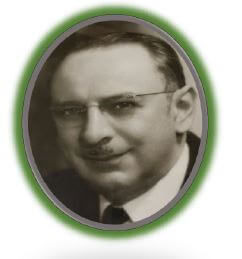 Dr. Roy Joshua Day was born and raised in Bedford, Indiana. After graduating from public schools in Bedford, he attended the University of Indiana at Bloomington and then moved to Boulder, Colorado where he attended medical school, graduating in 1917. He did post-graduate work at the University of Vienna and at Boston University. While in Boston he was associated with another resident by the name of Paul Dudley White. Dr. White was later to become an internationally known cardiologist. Dr. Day was a member of the medical corps in World War I.
Dr. Roy Joshua Day was born and raised in Bedford, Indiana. After graduating from public schools in Bedford, he attended the University of Indiana at Bloomington and then moved to Boulder, Colorado where he attended medical school, graduating in 1917. He did post-graduate work at the University of Vienna and at Boston University. While in Boston he was associated with another resident by the name of Paul Dudley White. Dr. White was later to become an internationally known cardiologist. Dr. Day was a member of the medical corps in World War I.
Dr. Day came to Del Norte, Colorado in 1919 with his new bride Mildred Lyman. While living in Del Norte they had 3 daughters born : Jean, Lucille and Charlotte. While in practice in Del Norte he was he was associated with Dr. John A. Biles.
He moved to Alamosa in 1924 and his office was located in the Masonic Building. Two years later he moved his office to the American Legion Building above the Rialto Theater. Throughout the years he was not only active practicing medicine but also involved in the community. He was a member of the American Medical Association, the Colorado State Medical Association and the San Luis Valley Medical Association. Locally he was a member of the First United Methodist Church, Masonic Lodge, Al Kaly Shrine of Pueblo, American Legion Post, Elks Club, Kiwanis Club, and the Alamosa Chamber of Commerce.
Dr. Day continued his practice up until 1960 when he retired because of illness. He passed away two years later on 25 Oct. 1962.
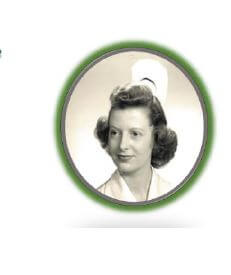 Betty Eavenson, R.N. We are going to discover how a special woman made it from Lamar Colorado to Alamosa Colorado in 1958. Betty Light was born in Lamar in 1922. Her family with farming background endured the troubling times of the “dust bowl” and depression years early on learning how to make do, work hard and deal with whatever is handed to you. She graduated from High School in 1942. She worked for a while as a telephone operator. She remembers the country phone system with many on a party line and everyone pretty much knowing what was happening in the neighborhood. Betty remembers the wonderful times with large family gatherings for birthdays and holidays. People really did know how to have fun and one did not really think about being “poor” because everyone was in the same boat.
Betty Eavenson, R.N. We are going to discover how a special woman made it from Lamar Colorado to Alamosa Colorado in 1958. Betty Light was born in Lamar in 1922. Her family with farming background endured the troubling times of the “dust bowl” and depression years early on learning how to make do, work hard and deal with whatever is handed to you. She graduated from High School in 1942. She worked for a while as a telephone operator. She remembers the country phone system with many on a party line and everyone pretty much knowing what was happening in the neighborhood. Betty remembers the wonderful times with large family gatherings for birthdays and holidays. People really did know how to have fun and one did not really think about being “poor” because everyone was in the same boat.
She had thought about being a nurse for some time. The ‘Cadet” program encouraged those in the nursing program by helping to pay for the program and giving each participant $ 15.00 a month for living expenses. She started her schooling at St. Luke’s Hospital, graduating in 1947 after 3 years of intense training. Her didactic training was received from Colorado University. Her pediatrics training was at Denver General, and much of the floor training was at St. Luke’s. Inez Stevens, another young student who later practiced in Alamosa, was one year ahead of her.
A graduate nurse invited Betty to go out on a blind date with her brother Walt Eavenson and thus began the “spark” that resulted in marriage 6 month later. After graduation in 1947 Betty and Walt spent a lot of time getting to know one another, and she met his parents and siblings in Montrose. Walt had already served time in the Navy and was working for Public Service. Betty worked part time in office nursing as well as at St. Luke’s. Linda and Vern were born during the 6 years they lived in Denver. The next move was to Sterling where Betty worked at the Hospital and Eddie was born there. Walt was itching to get back to the mountains and Alamosa offered another opportunity in 1958. She worked part time for a while tending to three children and finally started full time in 1960.
Betty recalls the 24 years working and remembering all the changes that have evolved. “We were always busy with the many patients struggling often over wo got the beds that went in the halls as over flow because sometimes OB needed them too.” The big changes now are disposable equipment. Then everything needed sterilizing for reuse: needles, syringes, gloves, colon tubes, etc. Sterile technique was very important. Patients were given back rubs and bathed by the nurses. It was a time to really care for patients and sometimes they were in the hospital for long lengths of time. Surgical recovery was often weeks. Cataract surgery now is in and out, then it was several weeks of sandbagging their heads and keeping them very still. Antibiotics were just starting when Betty was a student and now they are a common practice.
After retirement in 1984 she and Walt did a lot of camping, traveling and enjoying “their cabin.” In 1987 Walt suffered a debilitating CVA. Her skills helped them lead as normal a life as possible in a home Walt and she had built with add-ons as time permitted and then made handicap accessible. In 2013 Betty was diagnosed with Kidney/bladder cancer. Treatments and rehab deemed it necessary to put Walt in a permanent facility care.
Betty is charming, conversant about the many wonderful years working with so many special people, serving a community that she and Walt truly loved and cared about. Along with her professional skills she had many recreational skills. She and Walt enjoyed snow skiing, water skiing and camping. They took several cruises and enjoyed their motor home. As she reflected on the many years of challenges and joy she remarked often about the gratefulness for what life had offered.
She never complained about it. The biggest thing she sees missing now in so many respects is “common sense.” “We dealt with things as they happened.” Losing a child in a car accident was difficult but she was comforted knowing that life as we know it does not end. Betty Eavenson is a treasure well remembered by many and much appreciated for the many years of dedication to the hospital and community.
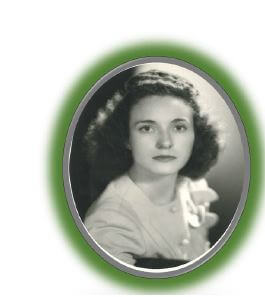 Nursing is among the oldest and most honorable medical professions. It has been practiced and enjoyed by men and women throughout written history, with women pioneering the field all the way.
Nursing is among the oldest and most honorable medical professions. It has been practiced and enjoyed by men and women throughout written history, with women pioneering the field all the way.
We are here to recognize a very special contributor to health care in the San Luis Valley—Inez Young Stevens,R.N. Her 40 years of nursing service in our community have earned her honor and respect, and now recognition in the SLV Medical Hall of Fame. She helped hundreds, if not thousands, of people in the San Luis Valley toward better health and positive outcomes.
Inez Young was born February 15, 1924, in Chama, New Mexico, and her father was a conductor on the Railroad. She attended Alamosa High School. After high school her professional education was at St. Luke’s School of Nursing in Denver, CO, where she received an RN (Registered Nursing License). She married a well-known figure in the San Luis Valley, Newton Junior Stevens. They enjoyed each other’s companionship for over 50 years. They were often seen together at dinners at the Alamosa Golf Course. Inez and Newt had one child, Randal (Randy) Young Stevens, who now lives in Phoenix, AZ and one grandchild, Lauren Elizabeth Stevens Hughes Miller.
When Inez returned to the Valley, she served this community as a professional nurse for over 40 years. Her hobbies included playing Bridge, gardening, traveling to Mexico, and playing golf. She and husband, Newt, were members of the Alamosa Golf Course for more than 20 years. After retiring from nursing, she and Newt moved to Phoenix to be closer to family. Inez Stevens died in Phoenix, December 29, 2013 at the age of 88.
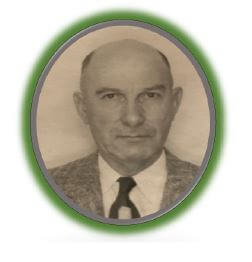 Ernst Wittenberg, M.D. was born May 10, 1903 in Hamburg Germany to Jewish parents, Dr. and Mrs. Max Wittenberg.
Ernst Wittenberg, M.D. was born May 10, 1903 in Hamburg Germany to Jewish parents, Dr. and Mrs. Max Wittenberg.
Ernst had a love for the ocean and sailing and became a master sailor as a teenager and bought his first sailboat from money made by selling wine from his dad’s wine cellar (unknown to his dad).
He graduated from medical school May 16, 1927 from Berlin Germany, completing an internship and receiving his license May 30, 1928. On January 15, 1931 he completed specialty training in OB-GYN and surgery.
He worked for the Salvation Army Hospital in Berlin and later, through connections of his father, he became a ship doctor and traveled the world, working for one year in Java, Indonesia. Then he moved to Japan in 1935, passed the medical board exam and his practice involved embassies and Japanese people. While working in Japan he met and married Elizabeth, a young dentist, who was born to Ukrainian parents. She had been raised in Manchuria and received her degree from Germany. They had two children, Peter and Paul, and they continued to work for the British and U.S. embassies while in Japan.
There was a fear that the Japanese were going to attack the U.S., so the Wittenbergs were issued a British visa, but the day they were to leave, Japan attacked Pearl Harbor – they were denied exit from Japan and were moved to an area guarded by a Japanese Internment Camp. The British tried to exchange the Wittenbergs for POWs but that was denied, and if the treaty ending the war had not been signed, they were to be executed. While in forced detainment he worked with the U.S. POWs and became the personal doctor to General Mac Arthur’s wife and also worked under General Cramer.
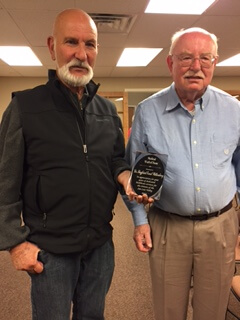 Peter and Paul, sons of Dr. Wittenberg
Peter and Paul, sons of Dr. Wittenberg
He and his wife immigrated to the USA in 1946, arriving in Seattle Washington. They lived in New York for one year where he studied to pass the boards. The money that they put in the bank was frozen because they were Germans and it was not released until the 1960’s. To put food on the table, Elizabeth would wait tables.
Colorado was one of the few states to accept foreign educated doctors so they moved to Colorado for a job at Penrose Hospital and Union Printers Home, but while there Colorado passed a law that no foreign educated doctor would be granted a license. Luckily, Judge Knous, who later became governor, was able to grandfather him in to receive a license.
He moved to La Jara in 1948 and the family became U.S. Citizens in 1953. The Alamosa Hospital at first denied him privileges, but with help from Dr.’s Bradshaw and Bunch, he was granted privileges and later became chief of staff. He took over the practice of a Quaker, Dr. Albert Lay, and delivered about 150 babies per year, mostly as home births, and had a very busy office practice. His first office was at his home on Walnut Street. He later had an office next to the La Jara Gazetter newspaper and that office burnt down. His last office was on Main Street near the school. The family still considers La Jara their home and the community has fond memories of the family. Elizabeth never forgave the good doctor for leaving La Jara, when he felt he had to move for health reasons.
The family moved to Boulder, where he became a member of the OB/GYN department at CU. Elizabeth went on to get her Master’s degree in Russian and taught it at the University. Peter became a Doctor of Pathology and Paul became Doctor of Veterinary Medicine. Grandson Greg became a Doctor of Dermatology. Granddaughter Debbie became a school teacher, granddaughter Kim a research grant writer for a medical school. Dr. Wittenberg and Elizabeth passed away in 1990.
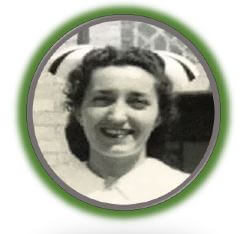 Ann Mary Dolcini Edstrom Watters, R.N. (March 24, 1923 – April 15, 2009) was the Director of Nurses for many years at the Alamosa Hospital, now known as SLV Health. She was greatly respected by the nurses who worked with her. She started the first “Candy Stripers” program at the hospital, and was instrumental in the development of the “Gray Ladies” program which consists of volunteers and is still evident and active at the hospital.
Ann Mary Dolcini Edstrom Watters, R.N. (March 24, 1923 – April 15, 2009) was the Director of Nurses for many years at the Alamosa Hospital, now known as SLV Health. She was greatly respected by the nurses who worked with her. She started the first “Candy Stripers” program at the hospital, and was instrumental in the development of the “Gray Ladies” program which consists of volunteers and is still evident and active at the hospital.
She was raised in Espanola, Ontario, Canada, and attended St Michaels University in Toronto, Ontario to attain her nursing degree. She and her childhood friend, Lorien San Cartier Stong attended nursing school together. They then were recruited to the Alamosa Hospital in 1948 by Elton Reese, the hospital administrator at the time. They reportedly had the shock of their lives when they arrived here. They thought they were headed to Anaheim, California, not Alamosa, Colorado! They had only spring clothes with them which did not suit the cold weather.
After being courted by many young men, Ann married Ray Edstrom at the “back” of the Catholic Church since he was not of that faith. They had two children. Theresa was born in 1953 and Mike followed 6 years later. Ray died in 1973.
Ann moved to Grand Junction where she continued to work as a nurse. She married her second husband, Jay Watters, while there. Together they started the first annual Community Christmas Dinner. When Jay died, Ann moved back to Alamosa to be close to family. She initiated the Community Christmas Dinner in Alamosa at that time. This is a legacy that continues. Many people appreciate the hard work it took to organize such a huge event in order to assure that no one has to be alone for Christmas Dinner.